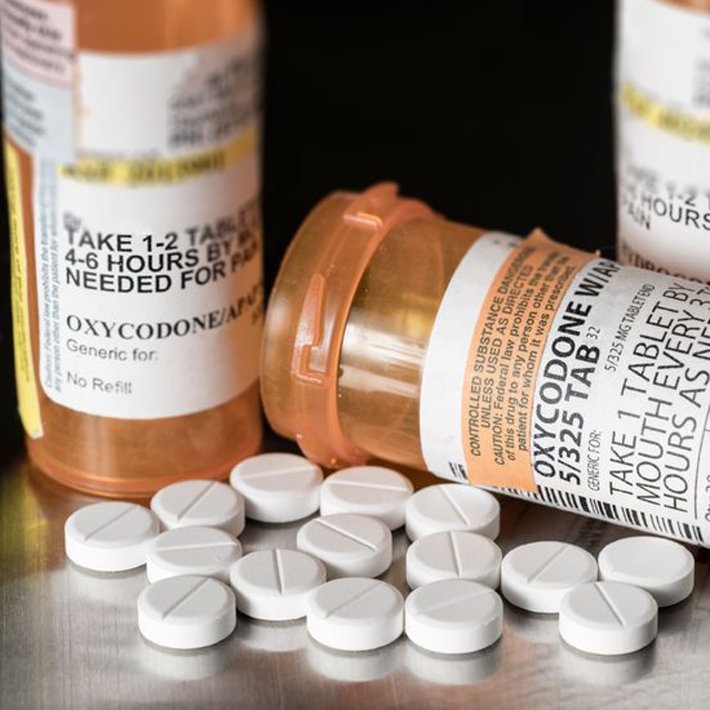The Real Story Behind Opioid “Abuse-Deterrent” Pain Relievers

According to The Associated Press, eleven “abuse-deterrent” opioid pain reliever drugs are available, with thirty more in development. Talk to any doctor in America today about pain relief, and odds are you’ll hear the phrase, “abuse-deterrent” more than once.
So what are abuse-deterrents? Why is there so much support for these drugs, and are they worth all of that glamour and glory?
Abuse-Deterrents Defined
Abuse-deterrents are merely altered versions of “tried-and-true” painkiller drugs that are more difficult to misuse than traditional versions of the medicines. Abuse-deterrents became talked-about when it became clear that opioid pain relievers were responsible for a significant portion of the nation’s addiction epidemic.
How Did Abuse-Deterrents Come About?
We can trace abuse-deterrents back to just after the turn of the century (depending on what exact definition you are using for “abuse-deterrent”). It was the time when pharmaceutical companies first started to come under pressure for rampant opioid painkiller addictions among the American people.
Some would say that the trend of abuse-deterrents started in 1996 when Purdue Pharmaceuticals of Stamford, Connecticut released OxyContin as an alternative to oxycodone. Others say that real abuse-deterrents did not come about until later.
However, according to The Journal of the American Society of Anesthesiologists, Inc., abuse-deterrent opioid pain relievers first came on the scene in 2010 when Purdue Pharmaceuticals introduced a new strain of OxyContin, an abuse-deterrent version of the drug. According to the journal, the newly formulated version of OxyContin was made in an effort to reduce the rampant abuse of OxyContin that had been occurring for the previous decade.

The newly formulated OxyContin was made with a special thermal coating on each individual pill. The coating was intended to make the misuse of the drug more difficult since it impedes a user’s ability to crush the pill into a powder for snorting or for dissolving for IV use. When the pill encounters a liquid solvent or even just plain water, the pill transforms into a gelatinous goop that is nearly impossible to inject. Abuse-deterrent formulations are also almost impossible to crush into a powder for nasal misuse. None of these deterrents, however, stopped many from abusing the drug.
And the idea took off. According to The Journal of the American Society of Anesthesiologists, Inc., 2016 saw an estimated 4.3 million prescriptions dispensed for abuse-deterrent opioid pain reliever drugs. That number represents about one-fifth of all opioid prescriptions prescribed that year.
Are Abuse-Deterrents the Future of Pain Relief?
As the prescribing of non-abuse deterrents declines, the prescribing of abuse-deterrents grows. This is hailed as a very positive and fortuitous medical and pharmaceutical “miracle.” But the problem is, struggling addicts are nearly as likely to abuse abuse-deterrents as they are to abuse non-abuse deterrents. Using the abuse-deterrent versions might be more difficult for them, but they’ll still do it.

And the unfortunate truth is if drug users turn their noses up at abuse-deterrents and they can’t get hold of non-abuse deterrents, they’ll just switch to heroin and use that instead.
Still, abuse-deterrents have garnered a lot of support over the years. In 2013, the Food and Drug Administration gave notice to drug makers that these companies needed to focus their attention on the development and production of abuse-deterrent formulas for pain medication. The FDA indicated that abuse-deterrent opioids were going to be the future of pain relief in America.
In an article on the Pain News Nework website, Douglas Throckmorton, a medical doctor and a top FDA official is quoted, “The abuse and misuse of these products (non-abuse deterrent opioid pain relievers) have resulted in too many injuries and deaths across the United States. An important step towards the goal of creating safer opioids is the development of products that are specifically formulated to deter abuse.”
It seems like the FDA and the pharmaceutical companies are pushing for a future which has abuse-deterrents as the front-runner of American pain relief. The FDA is happy because they have a new poster child for addressing the addiction epidemic. And Big Pharma is happy because they can sell abuse-deterrents at rates much higher than their non-abuse deterrent counterparts. But was this the right investment to make?
Why Abuse-Deterrents Don’t Work
From just a cursory glance, abuse-deterrent opioids might seem like a good idea. But upon closer inspection, we can clearly see the flaws.
The Institute for Clinical and Economic Review (ICER), a non-profit organization that works to recommend medications based on their value and efficacy, (or lack thereof), did not publish a heartening review of abuse-deterrents. In their words, “Without stronger real-world evidence that ADFs (abuse-deterrent formulations) reduce the risk of abuse and addiction among newly prescribed patients, our judgment is that the evidence can only demonstrate a ’comparable or better’ net health benefit (C+).”
Ouch. A C+ might be a passing grade in high school, but when it comes to medicine, that’s pretty disappointing. And it’s a slap in the face to the pharmaceutical giants that innovated these drugs (mainly Purdue Pharma and their reformulation of OxyContin), but it might not be an unwarranted slap.
The ICER made other salient points, as evidenced in the following quote from their report, “The rate of abuse of other prescription opioids … and heroin abuse may have increased during the same period [the period when abuse-deterrent OxyContin was introduced]. Furthermore, findings from direct interviews with recreational users showed that reformulated OxyContin may have limited impact on changing overall abuse patterns.”
It would seem that, not only can recreational drug users still find a way to misuse abuse-deterrents, but even if they don’t, they just find another drug to misuse. Either they misuse other pain reliever drugs that have not yet been converted into abuse-deterrents such as ER oxymorphone, ER morphine, and IR oxycodone, or they simply switch to heroin or synthetic opioids. (Synthetic opioids are a hybrid combination of opioid pain relievers, fentanyl, and heroin.) It would seem as though abuse-deterrents are not the life-saving miracles that we’ve been looking for.
But the truth is, we’re never going to find a miracle to the drug problem that comes in pill form.
Real Methods for Solving the Opioid Crisis

Abuse-deterrent versions of opioids will cost an additional one-hundred and thirteen million dollars to consumers over the next five years. The drugs would have to be discounted by forty-one percent over the next five years to achieve any version of health care cost neutrality, according to an article from Business Insider.
Why spend so much money on a “solution” that might not even be a solution at all?
We need real solutions to the opioid epidemic. We need changes like:
- Real pain relief options that are non-opioid based and which have no threatfor misuse.
- Real treatment for the causes of the pain.
- Real treatment options for those who are currently addicted to opioids.
- Real education on opioids to deter others from experimenting with such drugs.
- Real prevention efforts on community and state levels to stop the growth of addiction.
Our addiction problem won’t go away overnight. It will take a lot of work to reverse the trend of addiction. But abuse-deterrents, unfortunately, are not the way out.
Sources:
- http://anesthesiology.pubs.asahq.org/article.aspx?articleid=2667599
- https://www.painnewsnetwork.org/stories/2017/5/15/
are-abuse-deterrent-opioids-working - https://icer-review.org/wp-content/uploads/2016/08/
NECEPAC_ADF_Draft_Report_05.05.17.pdf - https://www.businessinsider.com/opioid-painkillers-abuse-deterrent-formulations-are-they-helpful-crisis-fda-2017-8
Reviewed and Edited by Claire Pinelli, ICAADC, CCS, LADC, RAS, MCAP


